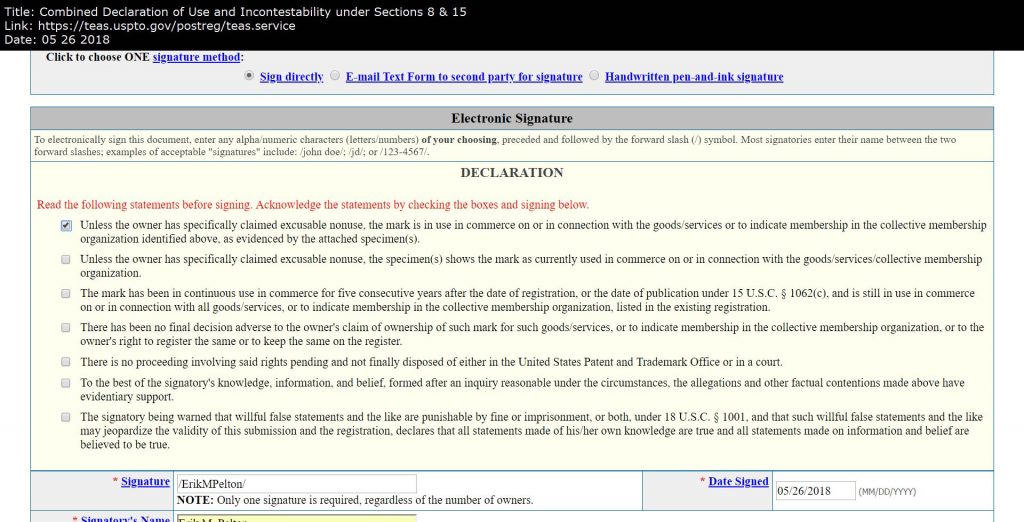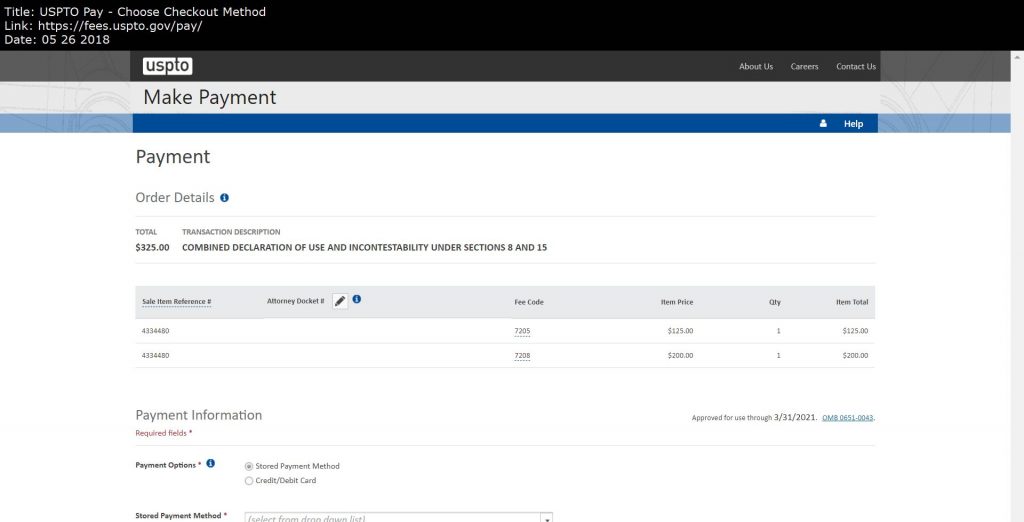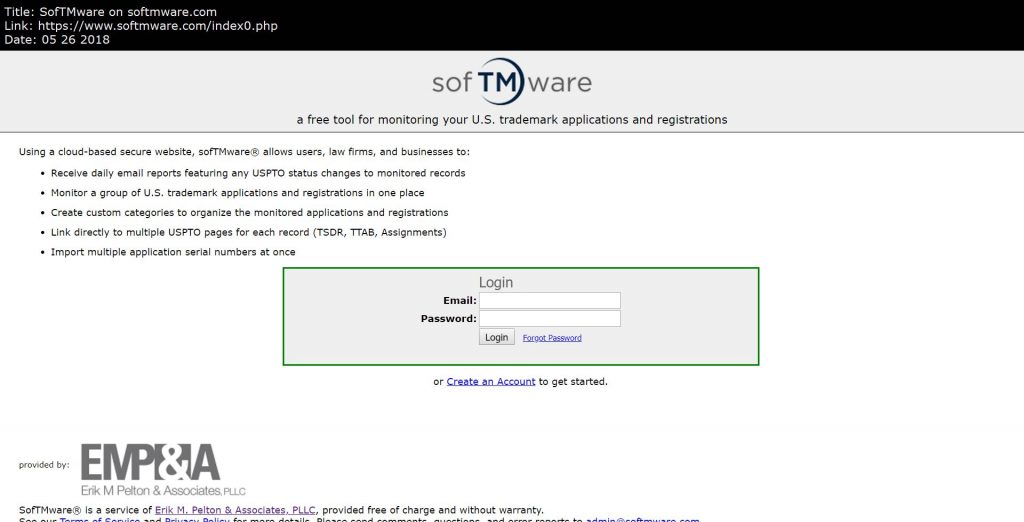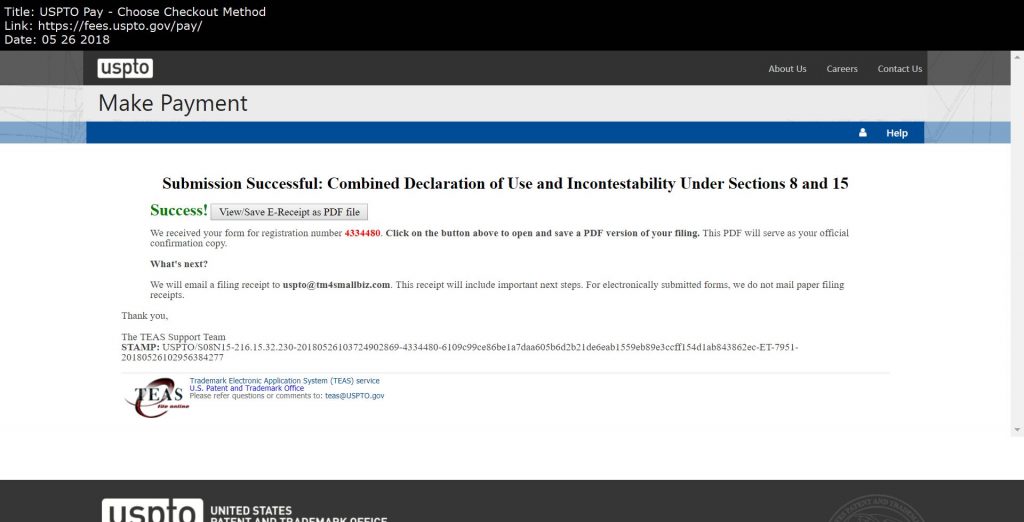A trademark registration at the USPTO can potentially last forever. But it must be properly renewed. The first filing is due between the 5th anniversary and 6th anniversary of the issuance of the registration certificate. This filing is called a Section 8 declaration of continued use. At the the the Section 8 filing is made, the registrant may, if eligible, also file a Section 15 declaration of incontestability.
Why renewing a trademark registration is critical
Trademark registrations can last forever – if renewed properly and if the mark is still in use. That is just one way trademarks are different from both copyrights and patents.
But the registrations must be properly renewed. It is critical to docket the deadlines and to properly file for renewal when the time is appropriate.
Why? Even without a registration, a trademark owner has common law rights. But the benefits and value of a registration are significant – particularly against actual or potential infringers [see here for more about the benefits of registration]. If a registration is cancelled due to a failure to renew, there is no guarantee that it can be re-registered (someone else may have a pending application or registration that could be cited as a conflict to a new application filing). Even if the trademark is re-registered, the new registration will not have the same history, the same length, and therefor will not be as strong as the earlier registration would have been. And applying for, and possibly fighting for, a new registration will almost certainly be more costly than a renewal.
What is incontestable status?
- The incontestable rights are provided under the law in Section 15 of the Lanham Act (15 U.S.C. Sect. 1065).
- An incontestable mark cannot be challenged unless it has become generic, it has been abandoned, or it was obtained by fraud.
How do I get incontestable status?
- A registered mark can file for incontestable status after 5 years of registration.
- The owner must sign a declaration stating that has been continually used by the owner during that five year period.
- The registration must not be subject to a legal challenge or decision against it.
Why does this matter?
An example: when Park ‘N Fly, Inc. sued Dollar Park and Fly, Inc. for trademark infringement, the Supreme Court ruled that because the Park ‘N Fly mark had obtained incontestability status, Dollar Park and Fly, Inc. could not claim that its rival’s mark is descriptive and weaker. (Park’N Fly v. Dollar Park and Fly, 469 U.S. 189 (1985))
In short, having an incontestable trademark registration could save tens of thousands of dollars – not to mention the hours and headaches – in a trademark dispute. It is an added layer of insurance for the investment in your trademark and your brand.
TIP: While filing a declaration of incontestability is not required, it is advisable. When a trademark has been used and registered for five years, the owner has already invested quite a lot in the brand. Generally, the investment to make the registration incontestable provides a good value.
Here is what a recent filing for renewal of a registration along with a declaration of incontestability looks like. I submitted this filing last week for my registration of SOFTMWARE®. Scroll down for screenshots of key portions as well.
2018-05-26 SOFTMWARE S08N15-4334480 by on Scribd
 Declaration statements that must be submitted (checked up) by the signer of the renewal filing.
Declaration statements that must be submitted (checked up) by the signer of the renewal filing.
Costs for a single class registration, Section 8 and 15 filing = $325 in government fees

Specimen showing use of the mark in connection with the registered services.
 Filing receipt PDF screen.
Filing receipt PDF screen.




